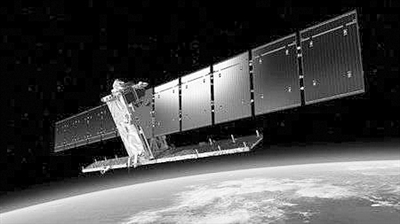ESA, which has received the largest funding in 25 years, will focus on investing in deep space and moon projects.

Europe’s Earth observation "Sentinel" satellite group will receive a large amount of funding. Image source: Science website
Science and Technology Daily News (Reporter Liu Xia) Space19+, the Ministerial Council of the European Space Agency (ESA), recently came to an end in Spain. EU countries agreed to provide ESA with a total of 12.5 billion euros in funding in the next three years, an increase of 20% over the past three years. It is the largest funding that ESA has received in the past 25 years. ESA said that this will further enhance human’s deep space exploration ability and deepen our understanding of the universe, who we are and where we come from.
According to the Physicist Organization Network, Germany, France and Italy plan to contribute 3.3 billion euros, 2.7 billion euros and 2.3 billion euros respectively out of the 12.5 billion euros budget. In addition, the member States also agreed that some necessary projects for ESA will be increased by 1.9 billion euros in the next two years, that is, the total funding for five years will be 14.4 billion euros.
According to official website news of ESA, Jan Werner, the head of ESA, said that one of the projects is to advance the launch date of gravitational wave detector "Laser Interferometer Space Antenna" (LISA) originally scheduled for 2034, so that it can work together with "Athena" X-ray Observatory, because some of their observation targets are the same, such as black holes, etc. The achievements of these tasks will fundamentally change our understanding of the basic physics of the universe.
According to the website of Science, Werner stressed that ESA needs to take prompt action to accelerate the development of Uranus and Neptune probes. Before 2022, the budget for this task is 576 million euros per year.
Werner said that before 2030, ESA will continue to invest in the International Space Station and become the first space station to orbit the moon — — The "Gateway" project provides important transportation and residence modules. ESA also passed a proposal for a lunar lander and rover proposed by France and Germany, which is a good example of the concept of "Moon Village" that ESA is committed to building. "Moon Village" will become the outpost of the moon. European member States have also confirmed their cooperation with the National Aeronautics and Space Administration (NASA) to provide financial support for the groundbreaking "Mars sample return" mission.
ESA’s Earth observation program is also a big winner, and will receive 1.81 billion euros in funding in the next three years. ESA will use this to develop its own scientific satellite "earth explorer"; It will also manufacture an operational monitoring satellite named "Sentinel" for the European Union within the framework of the Copernican Plan; Build more powerful satellites to measure carbon dioxide in the atmosphere. In this field, only NASA’s "Orbiting Carbon Observatory -2" satellite is "outstanding" at present, and scientists hope to monitor the atmosphere with higher resolution and distinguish between human-generated carbon and naturally generated carbon.
In terms of rocket development, ESA will continue to fund the upgrading of the large Ariane rocket and the medium Vega rocket. In addition, the development of reusable "space rider" rocket has also received further support.
Space safety and security is the "pillar" of ESA, and this field focuses on space weather and NEO threats. The asteroid deflection mission "Hera" was fully funded; However, the proposed "Lagrange" mission failed to achieve its goal. The mission is to fix the satellite between the sun and the earth to monitor the dangerous solar activity.
In the next few years, ESA also plans to strengthen its relationship with the EU and improve its work efficiency and organizational flexibility.